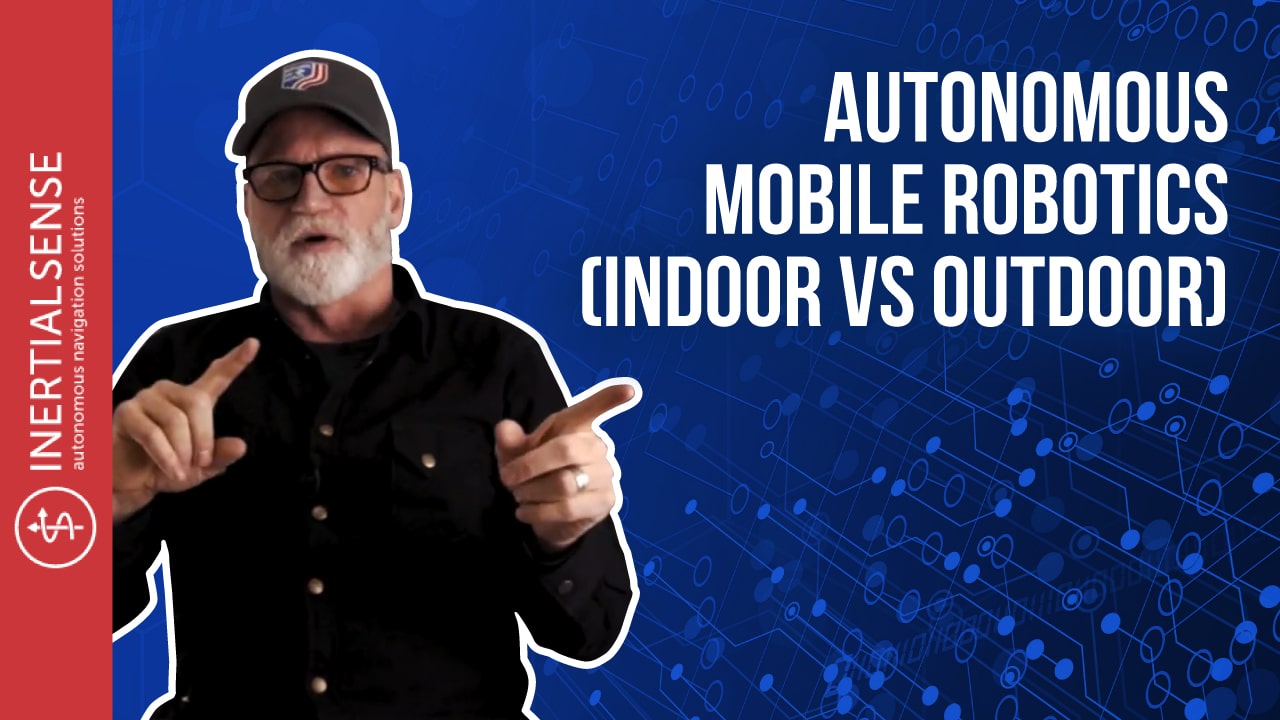
Autonomous Mobile Robotics – Indoor vs. Outdoor
Where do we sit as a company? Well physically, in Utah. Watch the video below as Tom breaks down how our autonomous platforms can help elevate your autonomous mobile robotics device.
Whether indoor or outdoor, a robotic device can navigate with the best of them. At Inertial Sense, we focus on the outdoor because the potential of the untapped market is growing.
Outdoor is more of a challenge because of the many elements to navigate, including weather and physical objects.
Three things that a company may ask when it comes to investing in autonomous platforms:
- Is my device going to be safe? Does your autonomous platform handle things like obstacle avoidance and other safety issues?
- Is it going to significantly add to costs or materials for my unit that will increase cost?
- How quickly can this be accomplished?
We’re good at developing high-performance, low-cost solutions for our customers. As long as we have the mindset of understanding that what we do has to fit within the customer’s business model, we continue to grow and excel.
Object avoidance is what we consider our bread and butter. Utilizing SONAR and LIDAR helps take your robotic device to the next level.
Our path planning and our control focus on guiding the robotic device when it encounters an object.
We offer a full-stack solution. This means the customer can provide us with their specs, and we help create the program to integrate with their API.
No matter how big or small, we want to help you. Click here or call us today to speak to one of our experts today!
Learn More:
Autonomous Platforms: What It Means To Be a Full-Stack Solution in Autonomous Robotics
No One Does What We Do. Inertial Sense is Your Full Stack Solution.
The Best Sensors for Autonomous Navigation
Video Transcript
Where do we sit as a company? Like I said, there’s all kinds of robotics, but where we are squarely focused on is the space called autonomous mobile robotics.
There’s two types: there’s indoor and there’s outdoor.
Indoor is what you see at the Amazon warehouse, the robots running around the warehouse and they’re picking out stuff. That’s one type of solution.
We’re taking on the outdoor analog to that. It’s a much more difficult problem to solve. You generally can’t navigate using physical infrastructure, the weather changes, there’s all sorts of heterogeneous training you have to deal with. That’s what we’re really good at, so we’re focusing on the outdoor applications in autonomous mobile robotics. Whenever you hear me say autonomy, it means autonomous mobile robotics.
There’s probably three things that come up with companies. One of them is is my device going to be safe? Does your autonomous platform handle things like obstacle avoidance and other safety issues? The second is is it going to significantly add to the cost or the bill of materials for my unit that’s going to drive the cost of what I’m doing out of the price range that my customers can afford. And third, is how quickly can we do this. Again, I think that’s where we focus really well on that value proposition.
We’ve always been really good at developing the highest performance, lowest cost solution. Whether it’s our sensors or whether it’s our autonomy platform, we’ve always focused on that. We’ve come in at a really good level of understanding that it’s got to fit within the customer’s business model, not just ours.
Second is object avoidance is a key part of what we’re doing. Everything from simple bump sensors to LIDAR and SONAR and other applications. SONAR is the backup camera in your car all the way up to LIDAR, which is really understanding what the object is and avoiding it.
The key challenge is what then do you do next? Our path planning and our control are great at telling the robotic device what to do after it encounters the object itself.
And then the third part is because we have a full-stack solution, all parts of it are exposed by APIs. It’s relatively simple for the customer to provide us with a spec that says here’s the diameter of our wheels, here’s the velocity of our accelerators, here’s how powerful the engine is, it’s being driven by either a joystick or steering wheel or levers, and then we just basically help them write to that API to integrate it.
But they’re all inputs to us, so it’s all kind of the same process no matter what system the customer is using.

